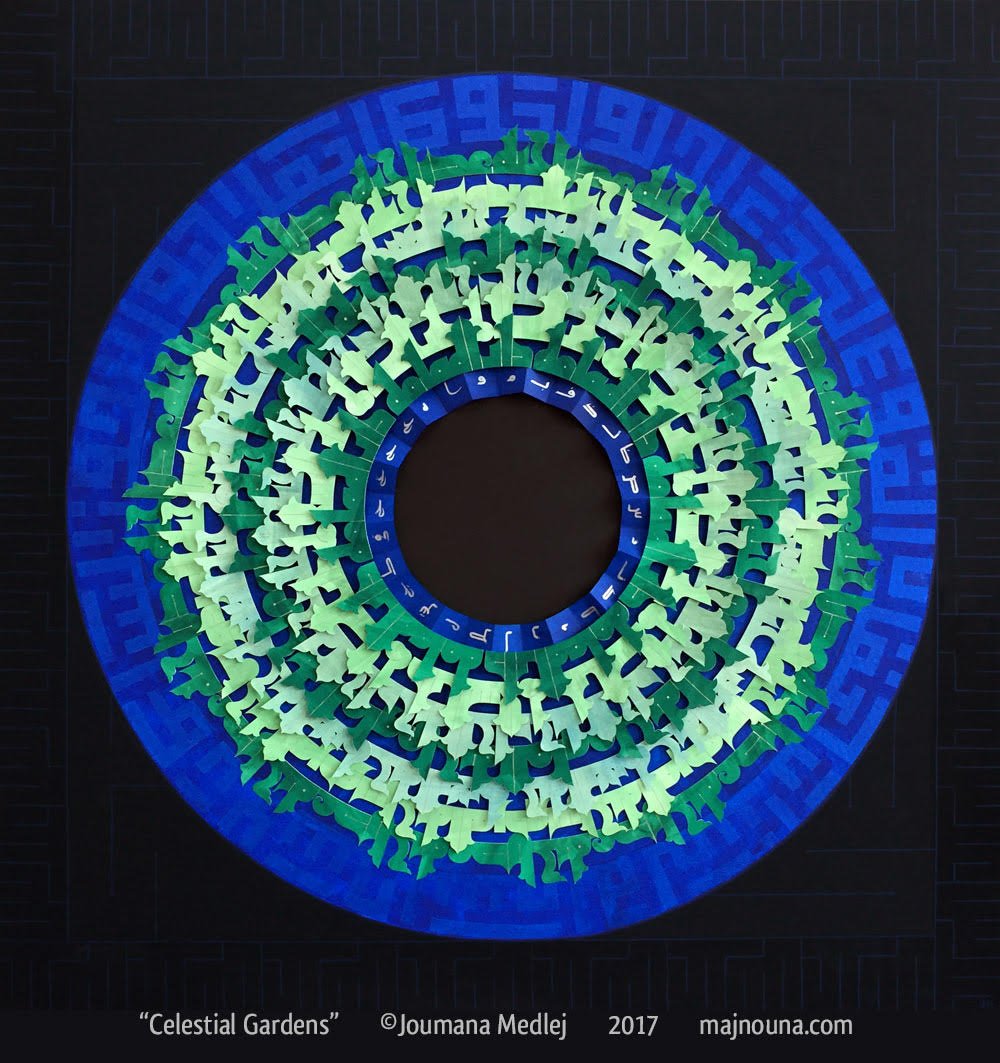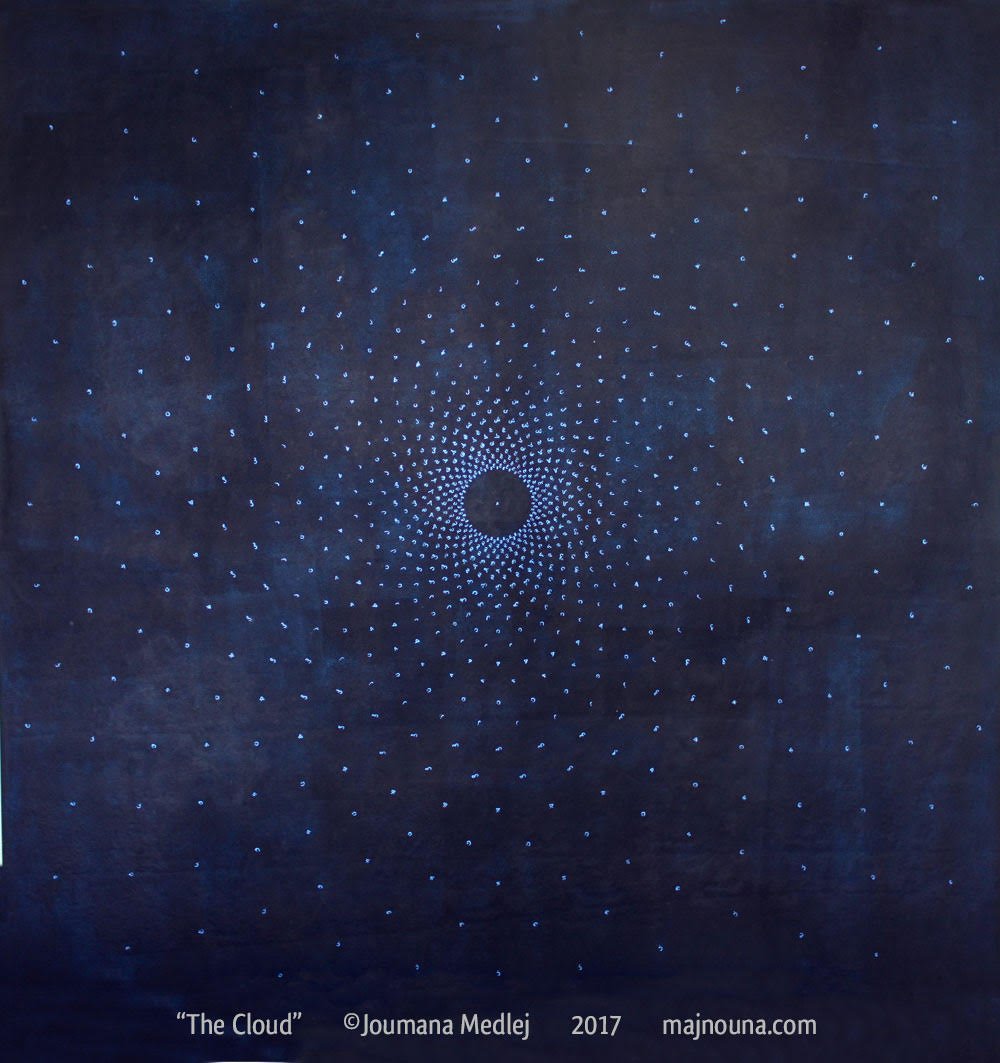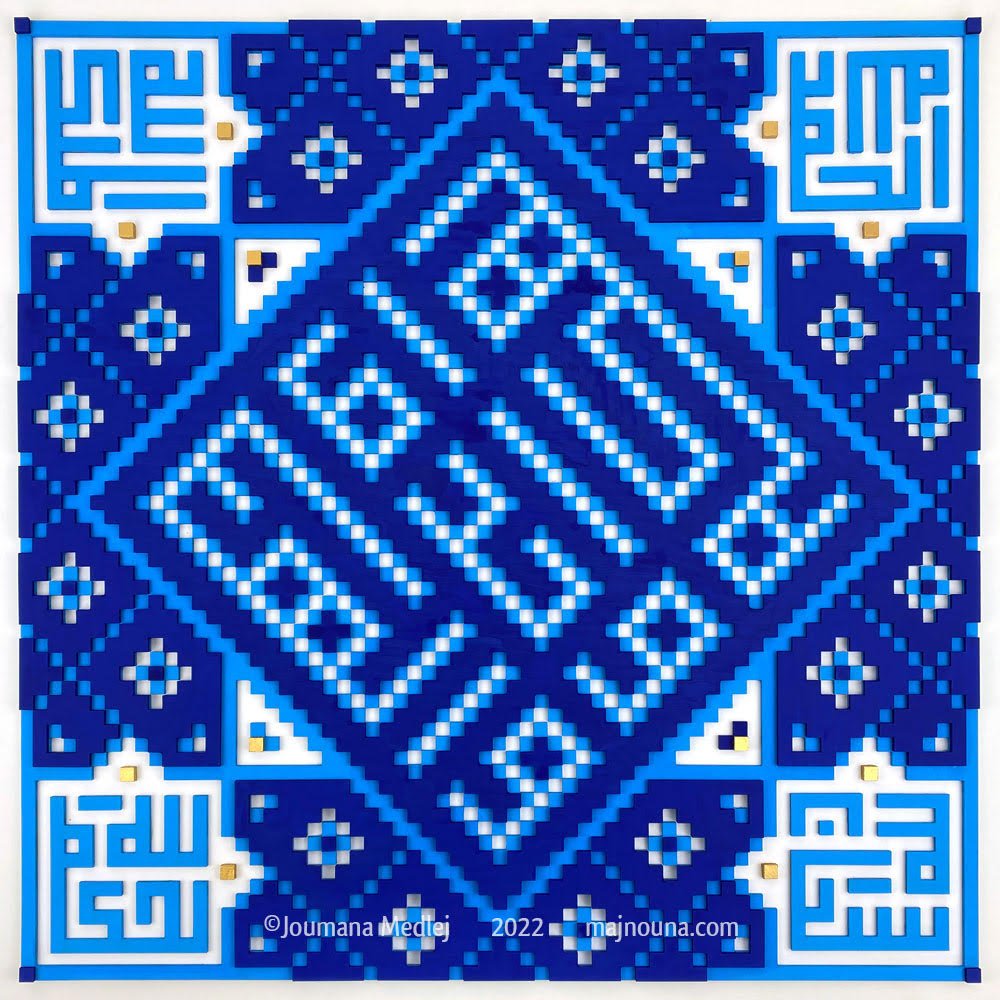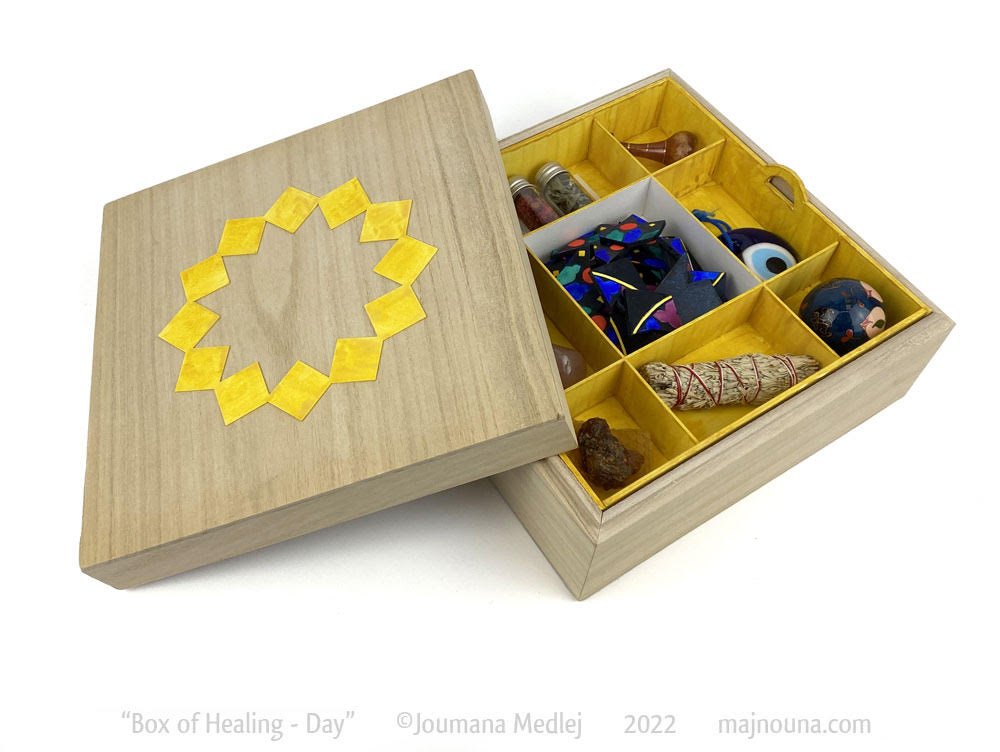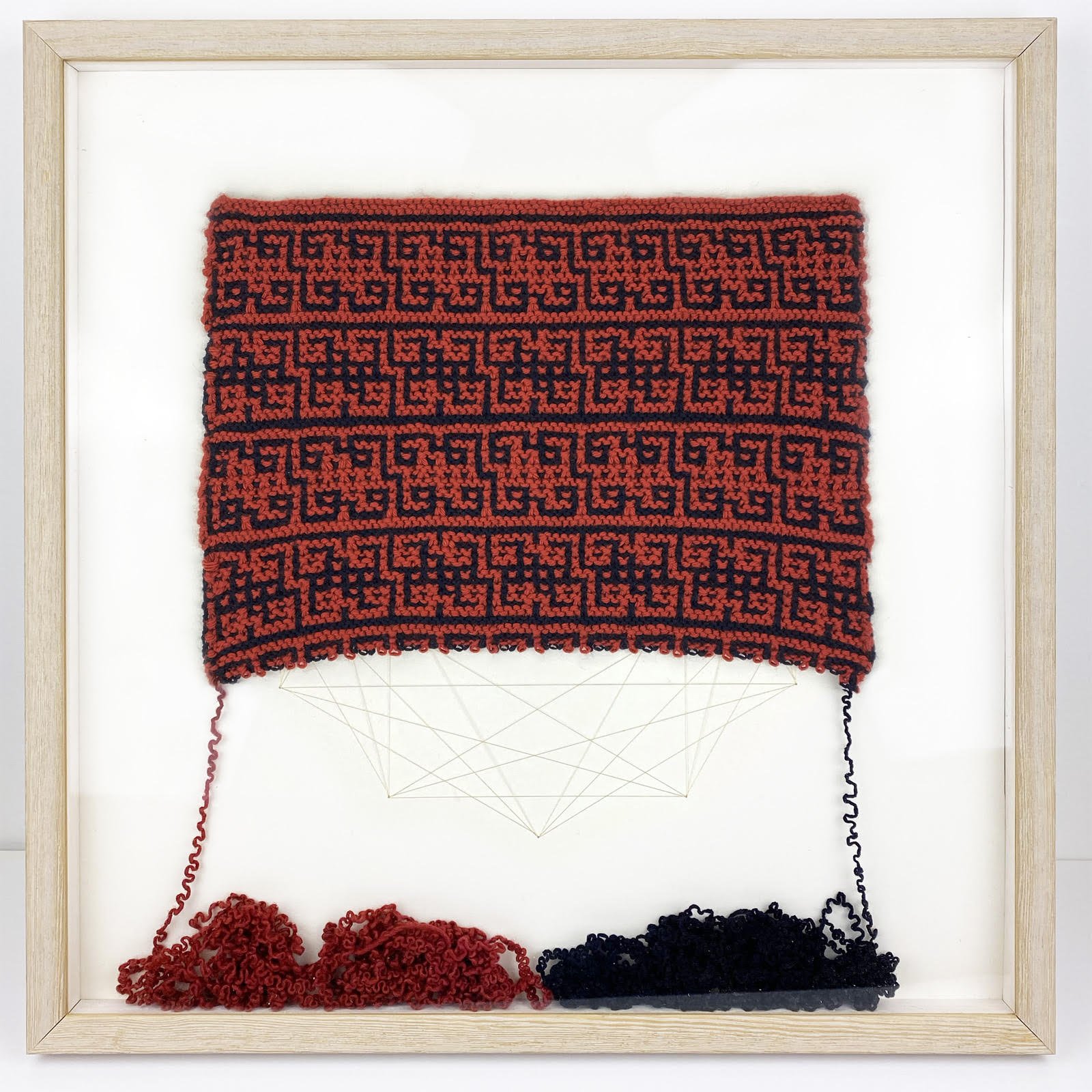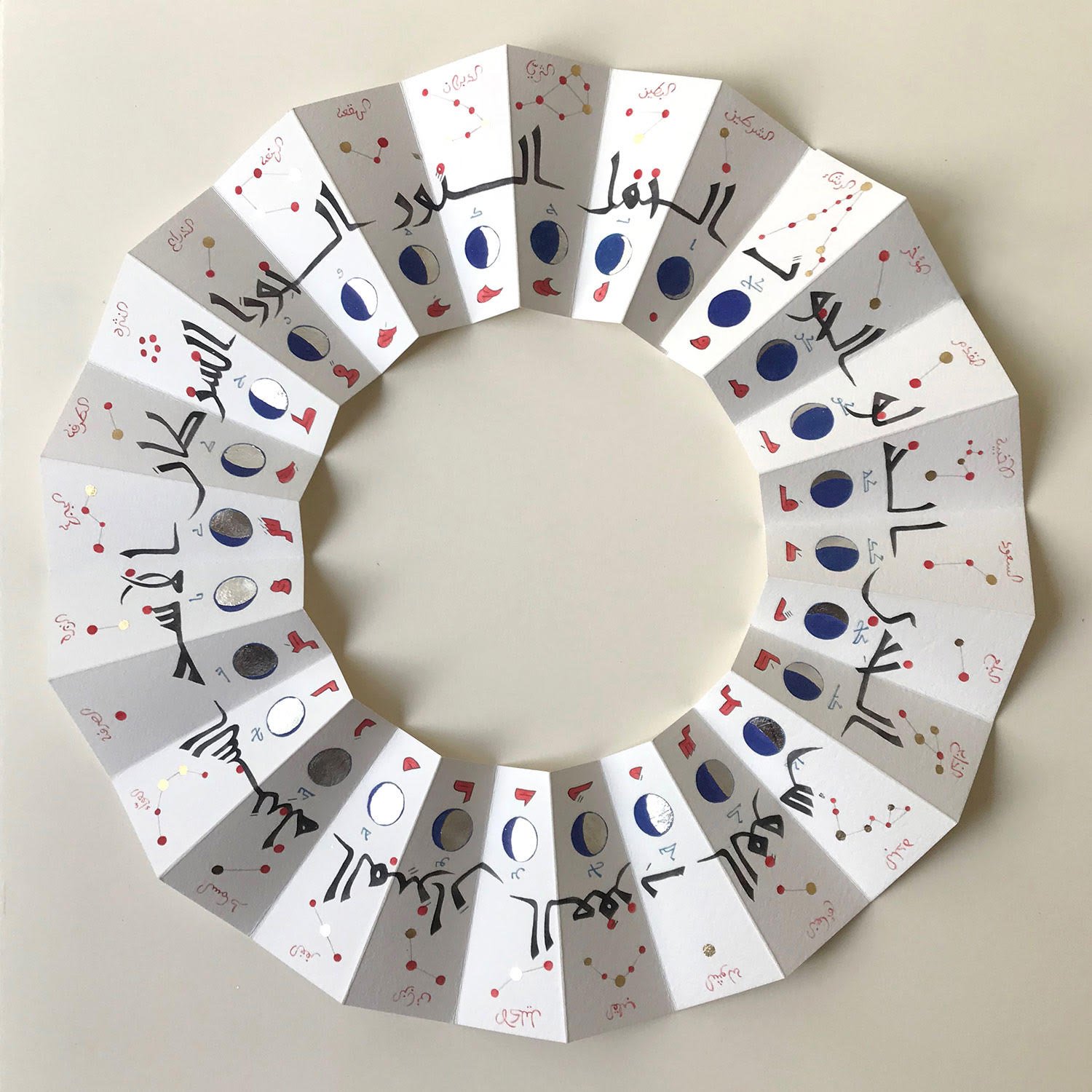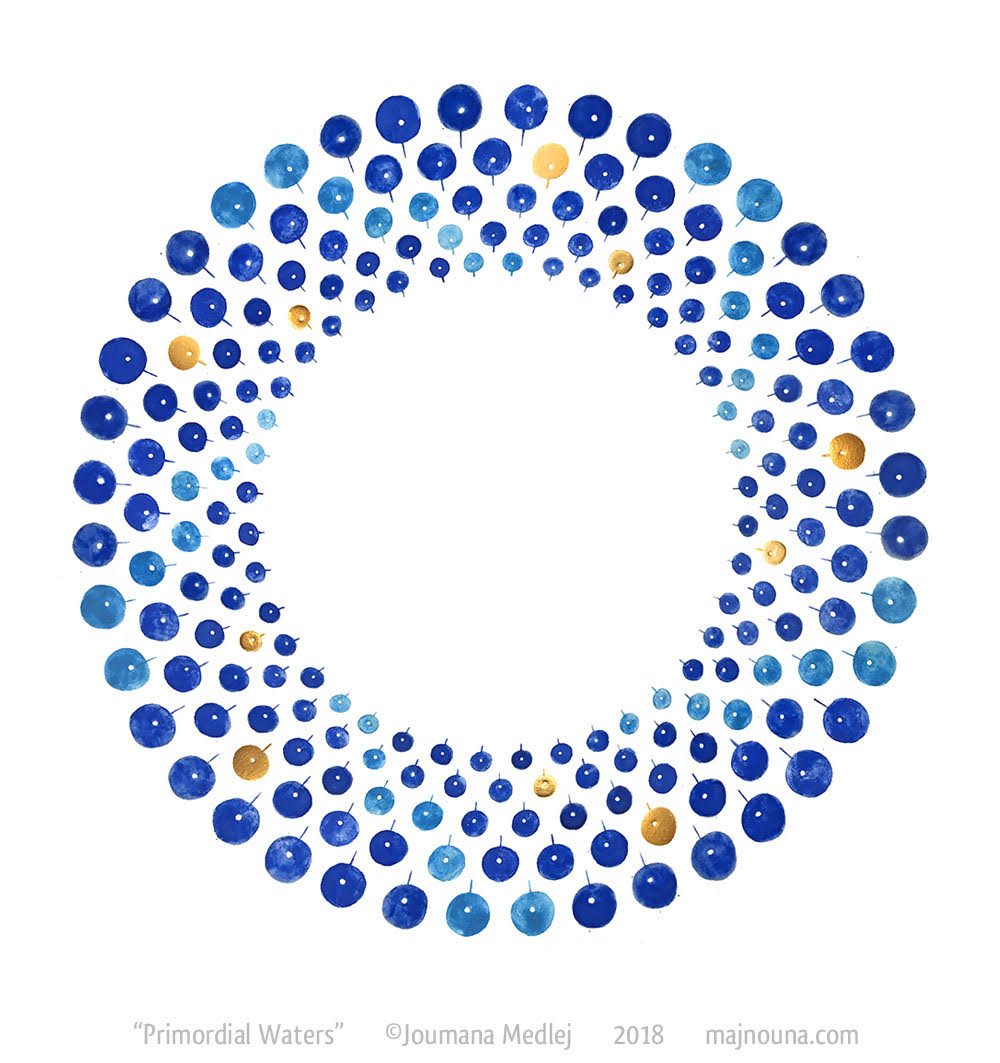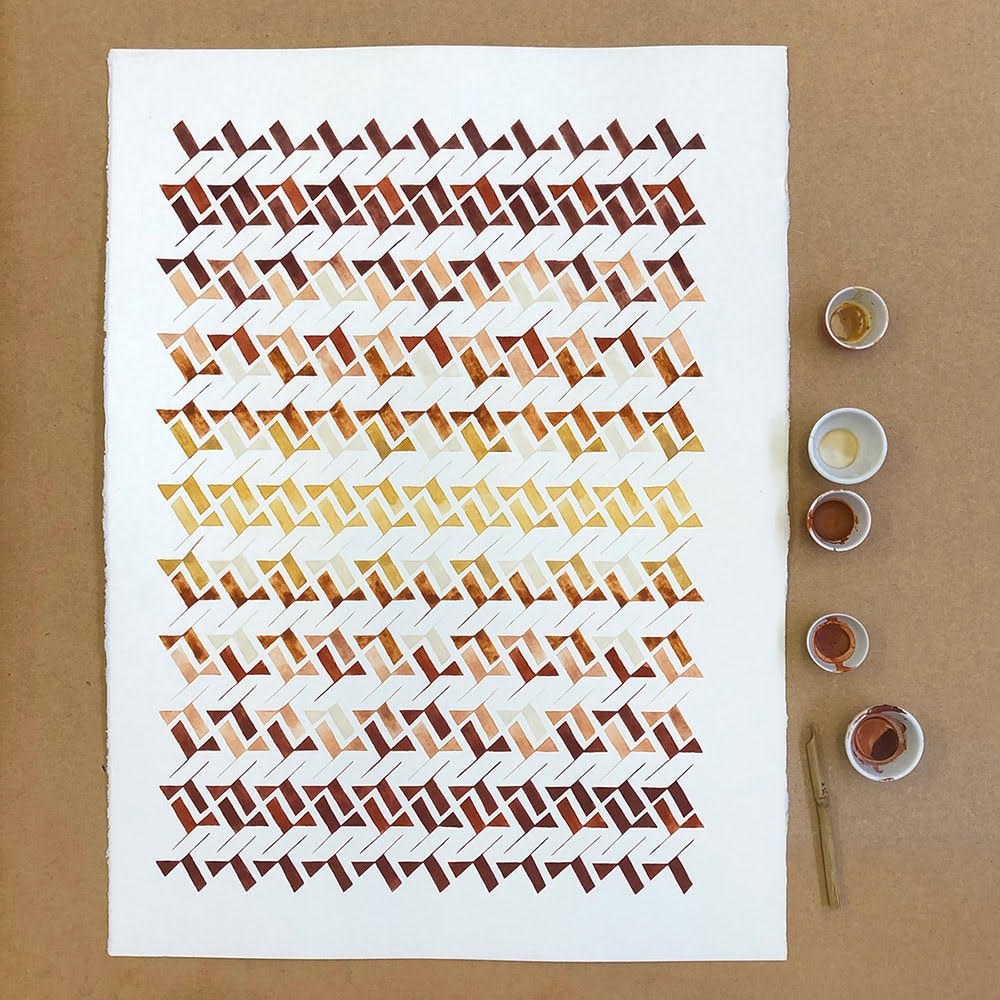Joumana Medlej is a multi-talented and creative British-Lebanese artist whose work ranges from creating multi-sensory treasure boxes, writing books, and making natural color pigments to using the ancient Kufic script to produce both traditional and stylized artwork. Joumana has a background in graphic design, typography, and illustration. She apprenticed under renowned Lebanese artist and master calligrapher Samer Sayegh.
Joumana has participated in exhibitions in the UK and internationally. She teaches courses on manuscript and square Kufic in the UK and on the online platform Domestika. Her work can be found in both private and public collections, including the BBC Arabic, Apple, and Royal Hashemite Court of Jordan.
I recently connected with Joumana to get her thoughts. She talked about her journey to the arts and her path to reviving the ancient Kufic script, both in the traditional sense and the transmutative aspects of the letterforms.
Could you please share a little bit of information about your background in the arts? How did you get interested in Arabic calligraphy?
I majored in graphic design, though I always leaned more towards art and was exploring various techniques in my own time. It’s through our typography courses that I met master Samir Sayegh, but it’s not until he invited me to assist him in his work, a few years later, that I started working with Kufi calligraphy, and eventually realized it was my calling. When I moved to London, I fully dedicated myself to deepening my understanding of this family of scripts and filling in any gaps through historical research. I also became a regular of the Prince’s School of Traditional arts where I acquired a number of specialized techniques such as working with gold and extracting pigments.
You have this unique approach to using art, geometry, and calligraphy to create objects (i.e., treasure boxes), calligraphic mandalas, and paintings, where did the inspiration come from?
Well, what you describe are phases in the work that grew organically from each other and into each other over more than a decade, so the question doesn’t really apply, or rather I would need a whole book to trace the meanderings of inspiration. But the different threads of my work all do the same thing, which is to hold the viewer in a bigger space of stillness and mystery, and these are feelings inspired in me by Nature and the Cosmos.
You apprenticed with renowned Lebanese master calligrapher and artist Samir Sayegh, how has working with him influenced your work? What is the most important thing you learned from him or your teachers in general?
It was working with Sayegh that put me on the path to studying and practicing the early tradition (though together we worked on his own art pieces, in his personal contemporary style), and he impressed upon me the need to return to the creative spark and not simply keep repeating comatose styles. We were also both inclined to work with the transformative aspect of the script, and that liberated me from commercial considerations and the frenzy of chasing trends. He didn't actively teach me anything, not in the Western-model way we understand it today; he gave me tasks that grew in importance until the work was second nature to me. From that, I learned the most subtle lesson of all: that a truly great teacher knows what not to teach you because some journeys are too crucial not to make on your own.
Your favorite artist(s)
I have so many, starting with the anonymous devotional artists of East and West, who illuminated sacred texts and built cathedrals for the sake of something bigger than themselves. Others that come to mind offhand are a very varied bunch: Joseph Cornell, Helen White, Nicholas Roerich, Vermeer, Mucha, and Rebecca Vincent. And others who are not necessarily visual artists (or whose visuals I don’t actually like) are important to me for their teachings on art: Peter Kingsley, Cecil Collins, Kent Nerburn.
Your advice for aspiring art students.
Figure out what it is you really want from art. Maybe you want to be a commercial artist to ensure a steady flow of cash. Maybe you want to follow and set trends and be known as an avant-gardist. Maybe you want to create beauty. Maybe it’s your spiritual practice and making a living from it is not a priority. And so on. Whatever it is, be honest with yourself and your audience about it, and never forget where your priority lies. Your integrity as an artist and a person is the most precious thing you can carry throughout your career, whereas attempting to continually please the world will only result in mediocrity and burnout.
For more information about Joumana’s work, please visit her website: https://majnouna.com/ and Instagram @joumajnouna. Domestika course: https://www.domestika.org/en/majnouna
All images courtesy of the artist
